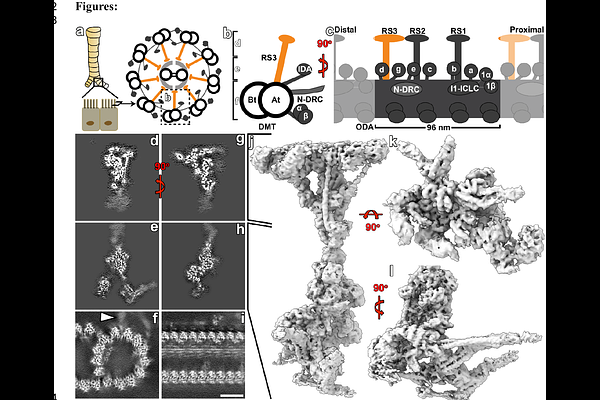The cryo-EM structure of mouse radial spoke 3 reveals a unique metabolic and regulatory hub in cilia

The cryo-EM structure of mouse radial spoke 3 reveals a unique metabolic and regulatory hub in cilia
Zhao, Y.; Song, K.; Tavakoli, A.; Gui, L.; Fernandez Gonzalez, A.; Zhang, S.; Dzeja, P. P.; Mitsialis, S. A.; Zhang, X.; Nicastro, D.
AbstractCilia are complex, microtubule-based organelles that protrude from many eukaryotic cells and have important roles in sensing, signaling, and motility. Recent studies have revealed the atomic structures of many multi-component ciliary complexes, providing new insights into their mechanisms of action that are vital for cilia\'s biological functions. However, little is known about the structure, proteome, and function of full-length radial spoke 3 (RS3), which is distinct from the structurally well-characterized RS1 and RS2. Radial spokes are conserved megadalton complexes that transmit mechanochemical signals from the central pair of microtubules to the dynein motors, thereby coordinating ciliary motility. Here, we combined cryo-electron microscopic single-particle reconstruction, cryo-electron tomography (cryo-ET), proteomic analysis, and computational modeling to determine the 3D structure and atomic model of RS3 from mouse respiratory cilia. Our structure reveals all protein components of RS3, including regulatory and metabolic enzymes, such as a protein kinase A subunit, adenylate kinases and malate dehydrogenases. We have confirmed the important role of adenylate kinase 7 in RS3 by cryo-ET analyses of respiratory cilia in AK7-deficient mice, which display primary ciliary dyskinesia. Our findings suggest that RS3 is an important regulatory hub and cluster of metabolic proteins that helps to maintain ATP at the levels required for sustained dynein motor activity and ciliary beating. This work advances our understanding of the structure and function of RS3 in ciliary motility and provides insights into the etiology of ciliopathies.